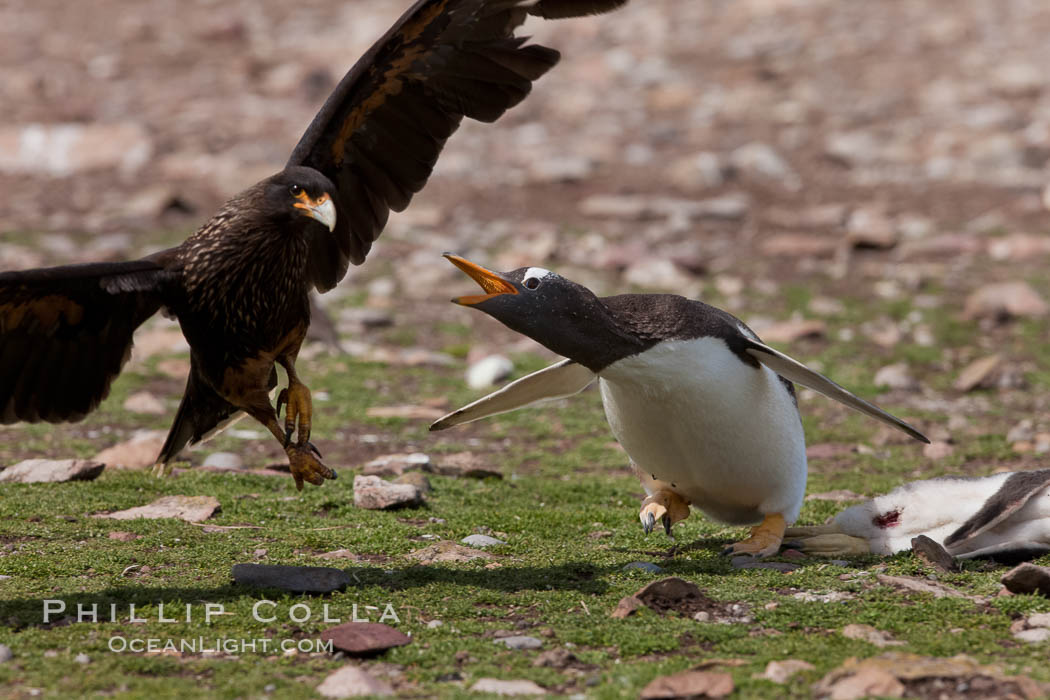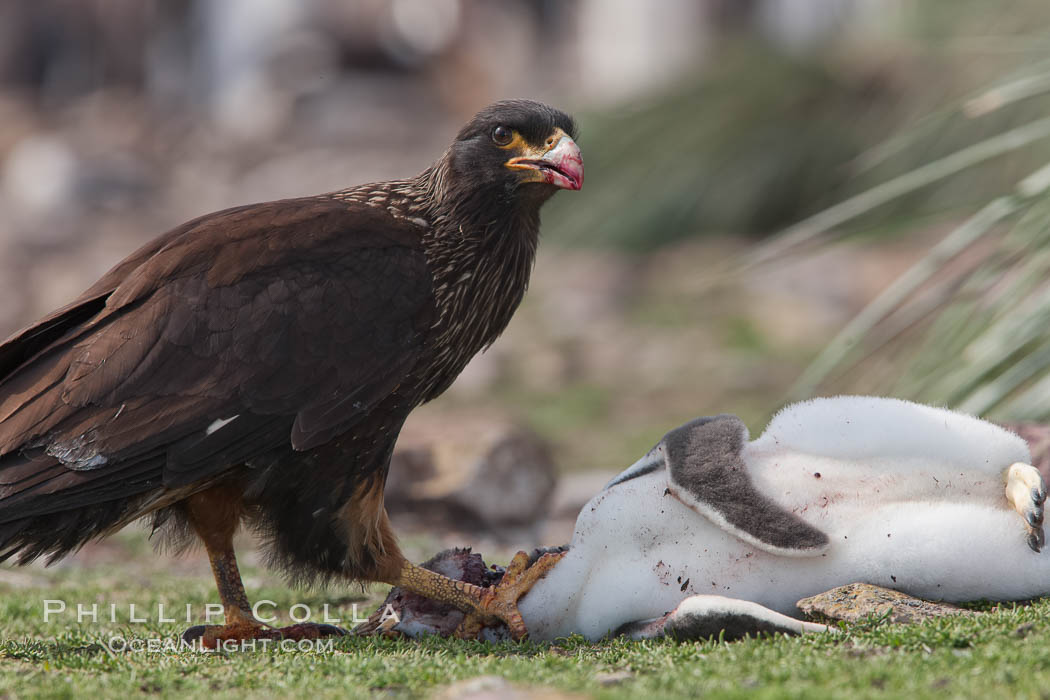Striated Caracara (Phalcoboenus australis)
 |
| Striated caracara (Copyright me!) |
Description
I thought this week I would move the focus back onto a bird (I promise I won't do birds all the time!) but this interesting, charismatic raptor is the focus of my dissertation project making it relevent. I can't imagine this being a large entry like the last few weeks as there is an awful lot about this birds ecology that we do not know or understand (hence me wanting to do a study on them), but I will make it as substantial as I can. The striated caracara is a bird of prey that belongs to the
Falconidae family and like other caracara species they fall under the subfamily of
Polyborinae. It is alternatively named Forster's caracara or the Johnny Rook. It has the southernmost overall breeding distribution of any bird of prey in the world. IUCN classifies them as Near Threatened due to their relativity low population. The striated caracara is a large and stocky raptor measuring at around 58-65 cm, although this species is sexually dimorphic with the female being on average 3% larger than the male.
 |
| IUCN classification of striated caracara |
The striated caracara's plumage is mostly deep brown to black, with fine white streaks running through the feathers beginning at the nape of the neck which become broader and more conspicuous on the upper back and breast. The underwing plumage is more red-brown with white tips on the primary feathers; the tail ends in a whitish band. The birds has a bare yellow patch of skin around the eyes and base of the beak, which is bluish. This bare patch provides a striking contrast with the rest of the dark plumage. Immature birds are browner in colour and lack the distinctive streaking and tail band, but they possess a tawny patch of feathers on the upper back. Adult plumage is acquired when the bird is around 5 years old.
 |
| Adult striated caracara (Copyright Simon Bussey) |
 |
| Juvenile striated caracara (Copyright me!) |
 |
| In flight (Copyright Laurent Demongin) |
 |
| Copyright Nitsch (DeviantART) |
Biology
 |
| Feeding on Upland Goose chick (Copyright Laurent Demongin) |
The striated caracara is naturally a tame, inquisitive bird with very opportunistic feeding habits. Their curiosity is thought to be more than a behavoural quirk, it serves an evolutionary purpose by aiding them in exploiting and developing novel ways of obtaining food, for example, they will dig small seabirds out of their burrows where they reside during the day and also hunt them on the wing at night. They spend the majority of their time on the ground by can run and fly swiftly if necessary. In most instances they use their strong feet to overturn large rocks and branches to search for food alongside digging. The diet of the striated caracara is variable, they will eat invertebrates, small seabirds, the eggs of larger seabirds such as penguins and albatross, dead, dying or young rockhopper penguins, which are a favoured food item, and the carcasses of furseals among other things including garbage. Where livestock and farming occurs across their range, they have been bought into conflict with humans as they are also prone to attack weak or stranded sheep. These birds also have a nefarious reputation for stealing red objects, including clothes and handkerchiefs. Like other falconiformes they have unparalleled colour vision which surpasses that of any mammal. Their innovative hunting methods have placed them as one of the most intelligent birds of prey. This bird of prey is also known to be cantankerous and will force other scavengers to relinquish their carrion.
 |
| Penguins worst nightmare (Copyright Phillip Colla) |
 |
| With Gentoo penguin chick (Copyright Phillip Colla) |
 |
| Gang of caracara feed on imperial shag (Copyright Laurent Demongin) |
The breeding season of this raptor occurs from December to late February, the female will lay a clutch of up to 4 eggs in a nest constructed from twigs and vegetation, lined with wool and grass. Hatching of the eggs is timed to match that of the nesting season of seabirds, thus providing a constant food supply for the chicks as they grow. After fledging young birds with often gather into large flocks which roam the islands. They are often solitary or in pairs but groups of up to 25 birds have been known to congregate in areas where a food source has become abundant.
 |
| In nest with chicks (Copyright Krystyna Szulecka) |
Range and Habitat
The striated caracara is found on isolated shores off extreme south Argentina and Chile, including the south and east coasts of Isla Grande on Tierra del Fuego, Isla de los Estados, Navarino, Cape Horn and the Falkland Islands. It commonly inhabits open lowland areas, mainly along rocky coastlines, but also potentially appears at higher elevations on low coastal mountains. This bird is only found on islands where there is a population of seals or seabirds.
 |
| Distribution of striated caracara |
Threats and Conservation
This bird of prey has been the victim of heavy, sustained and merciless persecution due to being tarred with an over harsh reputation of killing sheep. This caused its numbers to fall drastically across its range. Alongside human factors, the drastic decline of native seabird and seal populations are thought to have contributed to the caracara's falling numbers. From 1983 to 1992 it is believed that the population fell to between 500 and 600 pairs. In 2013 it is thought that the population has stabilized with them currently facing no immediate major threats. The population currently sits between 1500 and 4000 individuals. The striated caracara is now officially protected by Falkland law, making it illegal to kill this species without written permission from the Falkland Islands government. Some birds were taken from the islands and bought over to the UK where they entered breeding programmes within zoos. A notable success story occurred on New Island, West Falklands. The management of the island as a private nature reserve, set up in 1972, allowed the striated caracara to re-colonise the island, with it now representing the largest, single breeding population of this species in its range.
 |
| Group of juveniles (Copyright Frans Lanting) Looks like a 90's rap album cover... |
 |
| Copyright Laurent Demongin |
None of the above images belong to me and all rights reserved to the
original photographer. I do try and find the original source for as many
of the photos as possible so I can give credit as I use them, but
that's not always possible.
Birdman.















No comments:
Post a Comment